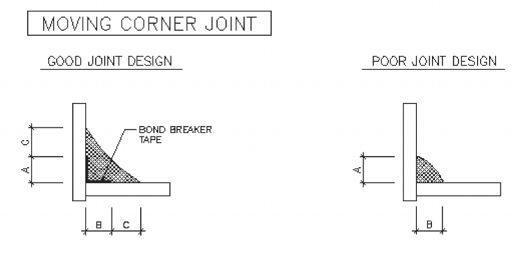Bond breaker tape - maximize the life of joint sealant

"Bond breaker" -- sounds like a Wall Street bad guy, doesn't it? In the hardware industry, bond breaker tape is frequently associated with a completely different type of crime: failing to properly seal window openings, shower cabinets, and other penetrations. (If your seals are leaking, you may be found guilty!)
In order to really understand what bond breaker tape does, and why it's important, you have to be clear on how sealants work and why they fail.
Sealants made simple
A sealant is a liquid-applied material intended to bond with two or more surfaces (usually called "substrates"). A vast array of sealants exist, from stiff butyl rubber and acrylix latex to more flexible (and common) polyurethane and silicone-based sealants. Each sealant has a specific application so study the MSDS and product packaging carefully and use the right sealant for the job!
What we most commonly refer to as a "seal" is a watertight connection between two or more surfaces. Proper application of the right sealant ensures that rain stays out and your shower doesn't end up dripping onto your sandblasted travertine bathroom tile.
So how do you keep the water where you want it?
Bond breaker tape: sealant's secret weapon
Properly sealing joints with bond breaker tape is one of those attention-to-detail steps that separate the shady-tree handymen and weekend warriors from construction experts. Here's how it works:
Bond breaker tape is used when creating movement and expansion joints. The tape prevents the sealant, silicone for example, from adhering to more than two planes (such as the perpendicular joint in the image below), which can cause the sealant to pull away or tear. This leads to early seal failure, leaks, restoration bills, and unhappy homeowners.

Photo from Dow Corning Americas Technical Manual
Breaker tape are particularly well-suited to "closed joints" (meaning joints without an obvious gap, illustrated above. When two perpendicular surfaces are sealed, the sealant experiences massive stresses under even the slightest joint movement. When we remember that the ubiquitous expansion and contraction from heating and cooling can cause joint movement, the hazards of not using bond breaker tape become increasingly apparent.
The CR Laurence publication Why Sealants Fail makes this plain:

Bond breaker tape serves a similar function to a backer rod (generally used for sealing parallel surfaces) -- by relieving some of the stress the sealant applies to the substrate, we create much more durable seals. These perpendicular, or "fillet," joints place the most stress on the sealant with even the slightest movement.
Despite their obvious advantages, corner joint seals incorporating bond breaker tape are relatively rare. That's just one of the many reasons why virtually every American homeowner has a half-tube of silicon caulk stashed away in the toolbox. It's also one of the tricks of the trade that high-end contractors and construction experts keep quiet about.
Bond breaker tape sounds great! But why can't I just use duct tape?
Now you're on the right track! Here are the advantages of using proper bond breaker tape:
- made of very tough polyethylene
- extremely high adhesion to steel, tile, and other construction materials
- maintains adhesion even in cold weather
- sealants adhere readily to the non-sticky surface
... and that's why the big boys don't just use duct, masking, electrical, or Scotch tape when they want to make certain a seal will last.
If you're ready to take your waterproofing efforts to the next level, DK Hardware stocks the premium CR Laurence bond breaker tape for glazing and glass installation at a great price -- by the roll or by the case.